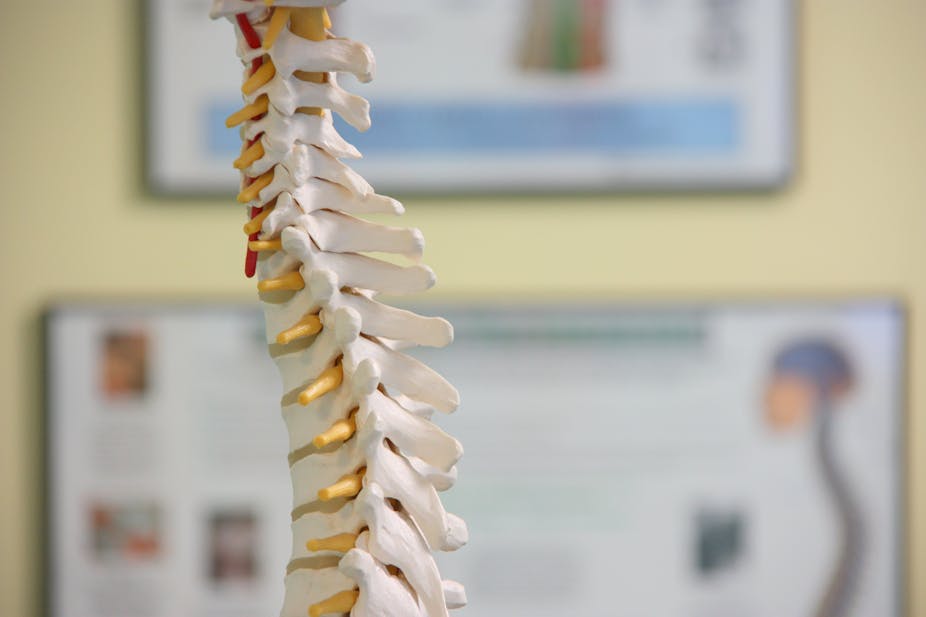Spinal cord injuries are currently irreparable. When nerve fibres in the central nervous system are damaged there is, as yet, no way of reversing this. But research we’ve been doing has led to the discovery of a mechanism for regrowing damaged nerve fibres.
A new study, published in Nature Communications, highlights the role of a protein called PCAF, which seems to successfully trigger a series of chemical and genetic events that allow nerves to regenerate. When we injected PCAF into mice with damage to their central nervous system, this significantly increased the number of nerve fibres that grew back, indicating that it may be possible to chemically control the regeneration of nerves in the central nervous systems.
Nerves are crucial to human activity – they facilitate the constant communication that our brain has with the rest of our body. So, if you touch a hot pan, signals relay this information back to the brain where they are processed and then a signal is sent back to the hand to pull it free from danger. Neurons are the cells that transmit these specific messages.
When the connections between these cells are lost, such as after a spinal cord injury, signals can no longer be transmitted through your body and paralysis occurs. Millions of people worldwide suffer from spinal cord injury, stroke and traumatic brain injury. As yet there are no successful treatments that lead to full regeneration of these lost connections.
Responding to damage
The reason why our central nervous system and peripheral nervous system differ in their ability to regenerate and re-establish lost connections has been at the centre of our research. The logic is that if we can understand how the body is able to regrow nerves in the peripheral nervous system, we can apply this knowledge to the central nervous system. This would enable us to help patients suffering from strokes, traumatic brain injuries, spinal cord injuries and even neurodegenerative diseases.
We found that epigenetics was at the core of the peripheral nervous system’s capacity to regenerate. Epigenetic mechanisms are processes that, without altering our core DNA sequence, manage to activate or deactivate genes in response to the environment.
Finding out how to turn genes “on” has been an important part of the process of regrowing nerves, and this is initiated by signals from the injured nerve itself. Until recently it was believed that epigenetic alterations were inherited just as we inherit DNA from our parents. Now, however, it is also clear that environmental signals can trigger these modifications to our DNA, which can temporarily or permanently alter gene expression.
Through tracking how the peripheral nervous system injury signals communicate to neurons that genes involved in nerve regrowth should be switched on, we have managed to discover the link between injury signals and turning on the right genes.
This work is still preliminary and we would like to determine if this regrowth of neurons establishes connections that lead to increased function. We believe this work can potentially lead to a pharmaceutical way of triggering the nerves to repair and grow, enabling patients suffering from CNS injuries to recover feeling and movement, but there are many hurdles to overcome first.
The next step is to see whether we can bring about some form of recovery of movement and function in mice after we have stimulated nerve growth through the PCAF-dependent epigenetic mechanisms. If this is successful, then there could be a move towards developing a drug and running clinical trials with people.

